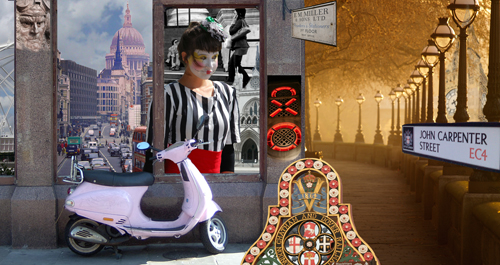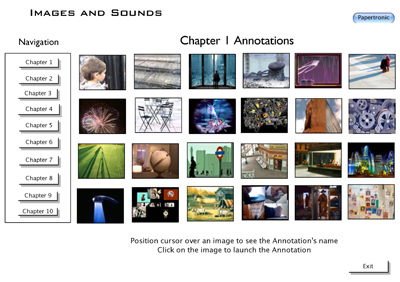Images and Sounds 
Collage by Slavica Savic
The Images and Sounds initiative aims to show how audiovisual composing parallels and compliments written composing and the value of introducing audiovisual composing into the education system to improve all young peoples learning experience. Audiovisual composing, in the 21st century, is as significant as the development of written composing, in the 20th. Video production does take place in some schools, but the practice is not seen as using a language, which restricts how it is used and how it is taught. Fundamentally, written composing is predominantly an individual activity, while audiovisual composing is a collaborative process. This enables pedagogical innovations involving the acquisition of complex communication and social skills.
Images & Sounds Audiovisual Language (Forthcoming October 2025) is a Papertronic Print book and a fully interactive eBook Comprising nine chapters:
1: Primal images and sounds
2: The role of the arts in audiovisual composing
3: Recording images and sounds and developing audiovisual stories: A historical perspective
4: Exploring an audiovisual story
5: Imagination and Technique: Universal Audiovisual Composing
6: Composers and Composition: Media Arts in a University
7: Extending Frontiers: Participatory Audiovisual Composition
8: Audiovisual Composing in the Creative Partnerships Programme
9: Going Forward
Images & Sounds Audiovisual Language comprises 9 chapters and 140 converged audiovisual annotations. Multi-layered with many pathways, meaning is created within paragraphs and chapters. It contains an Audiovisual Catalogue, which is the Contents page for the audiovisual annotations, organised by chapter. It is possible to navigate the text from the Audiovisual Catalogue in the Papertronic eBook.
The print book was developed, utilising the same page layout, and linking to a Papertronic App, on a mobile device, to view the videos. The print version is only able to conform to a traditional linear book design and reading experience.
chapter will comprise text and illustrations, within a traditional paper book and an e-book, automatically linked with up to 30 audiovisual annotations, presented as audiovisual galleries, video shorts, film clips, animation and multimedia compositions within an electronic environment.
